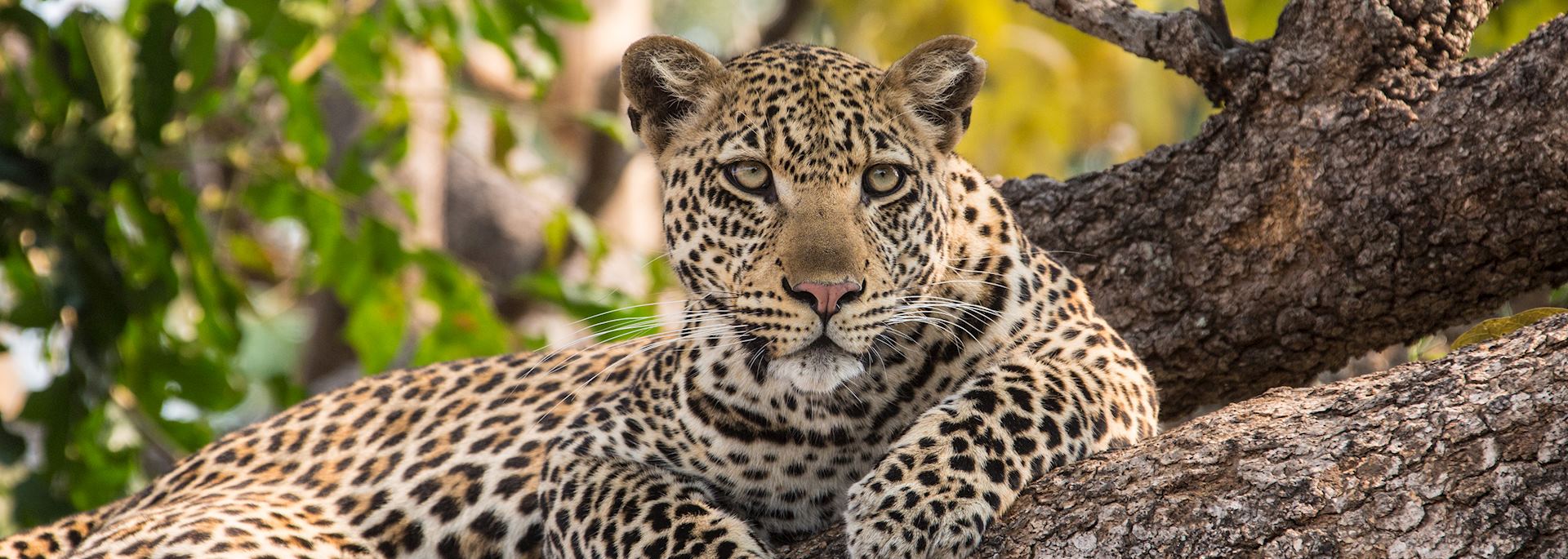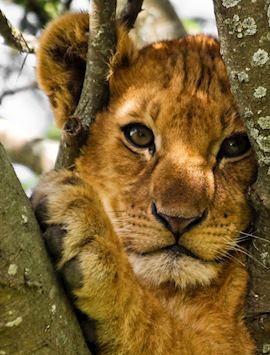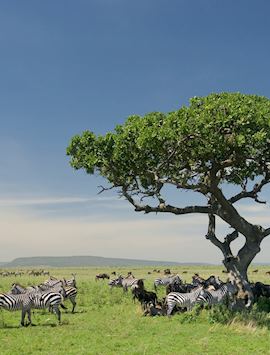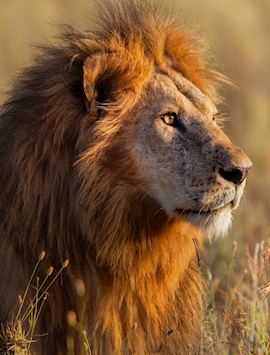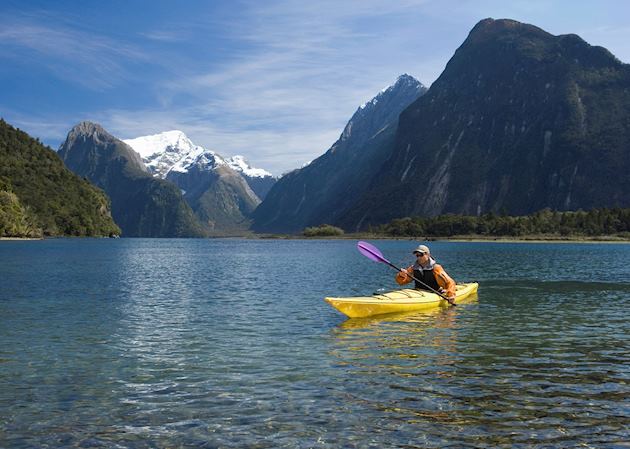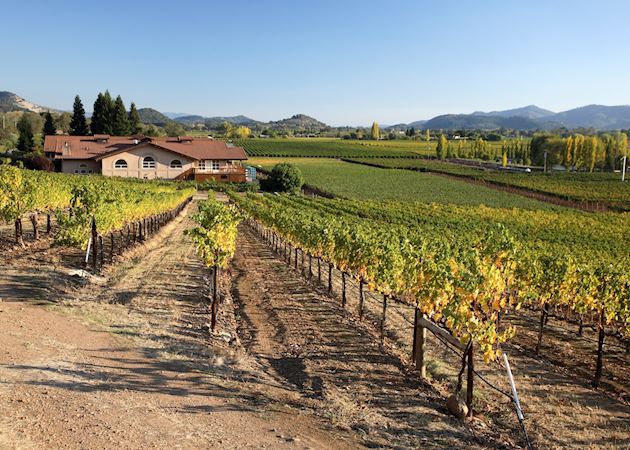One of the all-woman team at Tanzania’s Dunia Camp, head guide Jonesia ‘Zawadi’ Dominic shares here how she plans her safaris around what you want to see — with a touch of the unexpected. For five years, Zawadi has honed an intimate knowledge of the Serengeti and its wildlife. Here, she takes us behind the scenes to show the care and attention to detail that goes into making your safari, from helping you see the park’s headline animals to taking you to secret spots and opening your eyes to lesser-known species.
A little before dawn
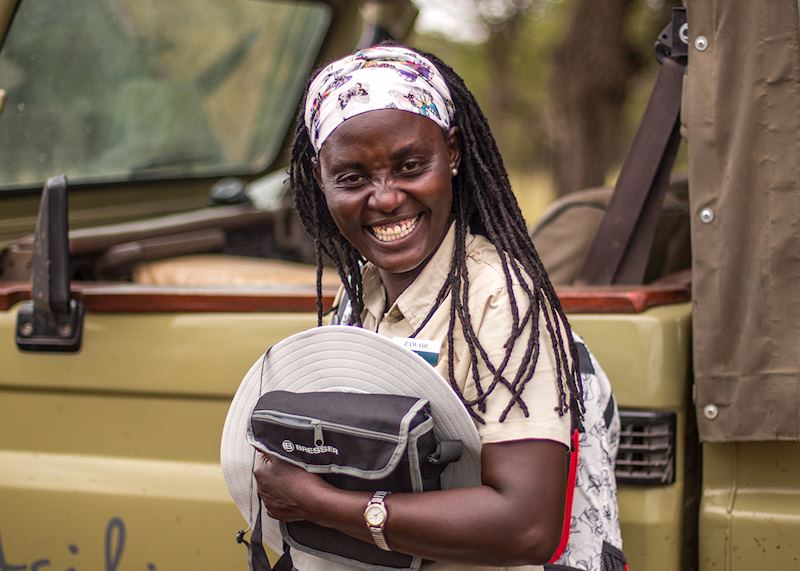
Each morning, I get to wake up in the most magical place on Earth. Being a safari guide is what I dreamed of throughout my childhood, which I spent on the shores of Lake Victoria, in northwestern Tanzania. Now, here I am working as a guide in the Serengeti, connecting people from all over the world with the amazing animals I see every day.
The first thing I do is prepare my vehicle for your early-morning game drive. Often I pack breakfast to take with us so we can enjoy it out on the plains — pastries, fruit, a flask of tea. If it’s a chilly morning, I’ll add blankets.
As a guest, you’re woken by a gentle call outside your tent from one of my colleagues, and we leave a steaming mug of tea or coffee at your door to coax you out of bed — the early starts do get easier.
The morning game drive
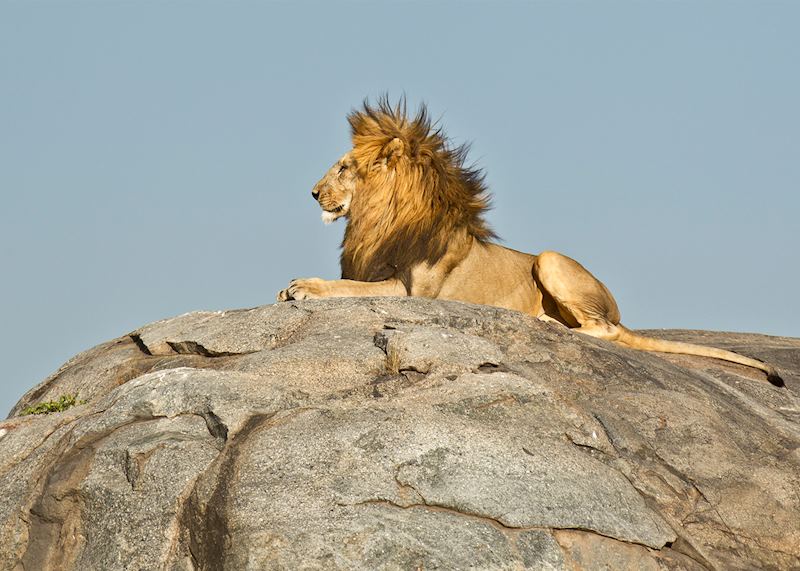
We set off in an open 4x4. Early morning is best because animals are more active in the cooler temperatures, plus I like how fresh everything feels. You can sometimes see animal tracks left in the moist ground, which give you clues to what happened overnight.
Usually, I’ll have planned a route the night before after talking to you over dinner. I ask you what animals you most want to see, and I know the best places to spot them based on their preferred habitat. Over the years, I’ve come to know different lion prides and their territories, as well as trees that are popular with leopard or cheetah seeking shade.
Whatever you want to see, I’ll usually drive you to Moru Kopjes, northeast of the camp. Its landscape is interesting because you have granite kopjes (small, boulder-like hills that rise from an otherwise flat area), which big cats like to use as lookouts, and there are more trees than elsewhere. It never disappoints.
Every day is different, but you might see lion, elephant, leopard, giraffe, and even rare black rhino, as well as thousands of wildebeest and zebra grazing during the Great Migration.
When we have a good sighting, I explain what the animals are doing and why, as you sit and take photographs or just watch. After a while, I radio other guides from the camp, so their guests can enjoy the sighting too (and they do the same for us). We make sure there are never more than five vehicles at a time.
Lunchtime and a siesta
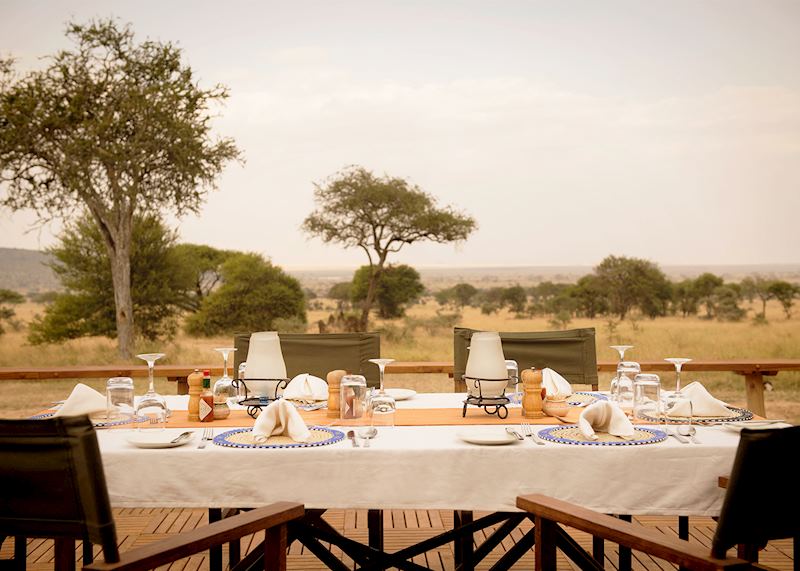
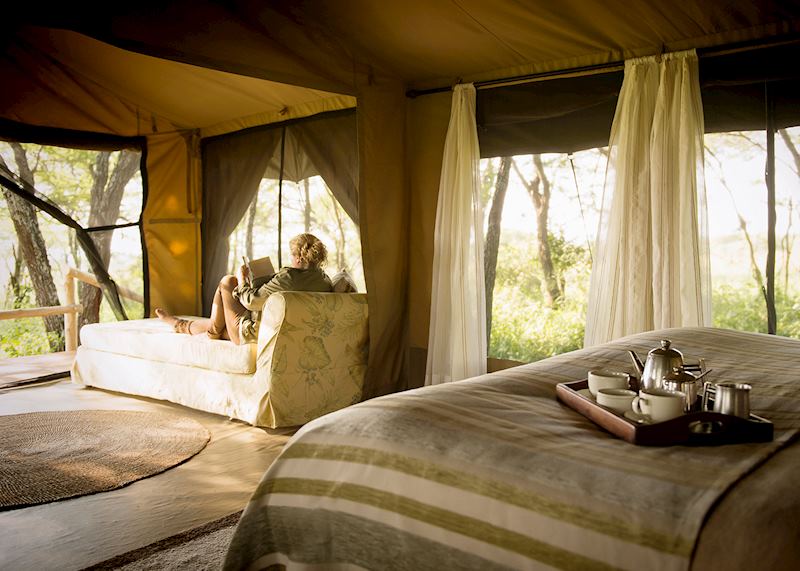
After five or six hours, unless you’ve opted for a full-day safari, we return to the camp for lunch. Then you’re free to relax — you might read a book in a comfy armchair in the camp’s communal tent, or head back to your own private deck to see what animals you can spot through your binoculars.
The camp’s position in the central Serengeti means the Great Migration herds pass by twice a year, so you’re likely to see many plains game nearby.
While you’re relaxing, I’ll think about where to take you next based on what we saw that morning, and which animals you’re still eager to encounter. I’ll also prepare for our afternoon game drive by cleaning the vehicle and packing more snacks and your choice of drinks for sundowners.
The afternoon game drive

Just before our second game drive, you can enjoy afternoon tea in the communal tent. As we set off, I tell you roughly where I’m planning to drive us and what we might see: sometimes I hear from other guides if there has been a good sighting and include that in our route, or we might want to check back to our morning spot to see if there have been any developments.
Even so, we could come across anything, so plans can change at any moment.
As temperatures cool, animals wake from their naps and emerge from the shade, ready to eat again. You might see lioness stretching and gathering as they prepare to hunt, or herds of antelope and zebra grazing in larger numbers for safety. I try to nurture people’s appreciation of all wildlife and how they live together in this ecosystem, rather than just focusing on spotting big game.
As daylight fades, I like to drive you to the Gong Rocks in Moru Kopjes. Once we’ve climbed to the top of the rocks, I set out sundowners while you take in the views over the plains, reaching far to the horizon. It’s the best place to watch the sunset.
Dinner is served

We drive back to camp in the twilight, looking for nocturnal species like porcupines, civets, and honey badgers along the way.
Dinner is ready and waiting, prepared using locally sourced ingredients. You can eat it in the dining tent or outside under the stars. I join you at the table to talk about what we experienced that day and make a plan for tomorrow — there’s always more to experience in the Serengeti.
Ideas for making this safari your own
If you want to see… the Great Migration
Some 2.5 million wildebeest and zebra migrate across Tanzania and Kenya year-round. Visit the Serengeti in February or March to see animals with their young, or between July and October to witness them crossing the Mara River, predators in tow.
If you want to see… birdlife
November to April is best for seeing migratory bird species from Europe and North Africa, including bee-eaters, storks, and various eagles.
If you want to see… big cats
Any time is good, but it’s easiest to spot big cats during the dry season between July and November, when the vegetation has thinned.
You can stay at Asilia’s Dunia Camp as part of our classic northern Tanzania safari.
Read more about trips to Tanzania
Start thinking about your experience. These itineraries are simply suggestions for how you could enjoy some of the same experiences as our specialists. They're just for inspiration, because your trip will be created around your particular tastes.
View All Tours in TanzaniaWas this useful?

